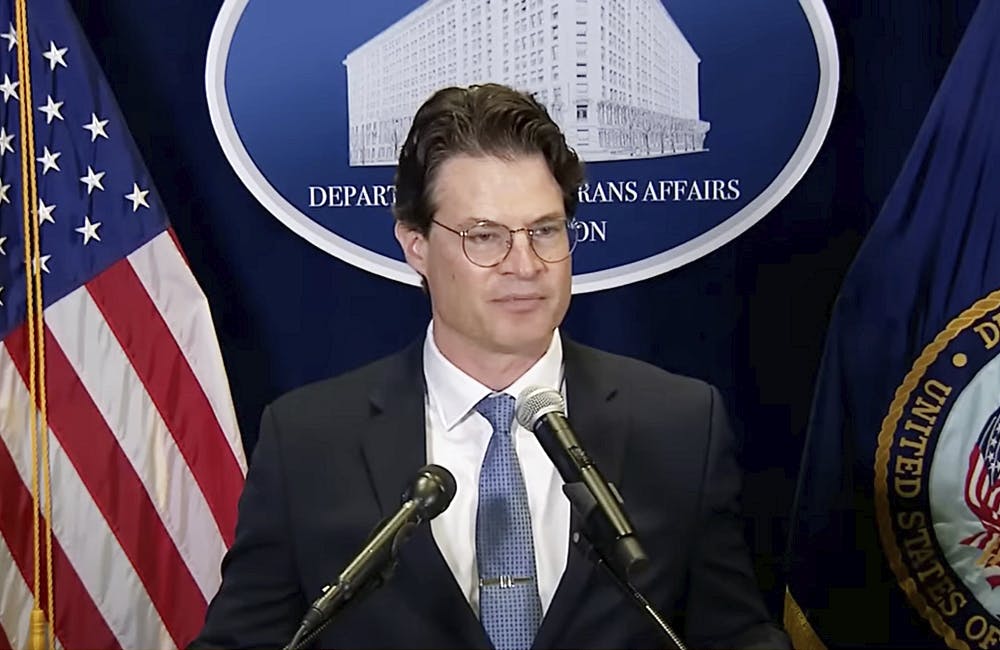Census Bureau Developed Survey Explorer Tool with UX Design
The bureau’s new reference tool transformed users’ information access.

The Census Bureau identified a problem: how do you create a simple visual to convey all the data topics, geographies, and frequencies for 120 censuses and surveys? The answer: you don’t. Instead, a design team created a brand-new reference tool with user-centered design, transforming the way consumers access information.
The legacy reference system listed names and limited descriptions for each of the bureau’s 120+ surveys, which spanned eight webpages. Users had to follow several clicks to access the detailed topic, geographic and frequency information for each survey, and they would have to click through every survey in order to compare their data points.
There was no easy way to visualize and compare all of the survey information, so the design team opted to build the Census Survey Explorer search tool.
“Researchers can select criteria or use the tool in a more exploratory way to discover what [data] we have without having to open multiple web pages and data tables,” Eric Coyle, Census Bureau intergovernmental affairs specialist, said at the 2022 Government UX Summit Wednesday. “The best benefit of the tool is that it helps to narrow down their choices of what surveys to research in an incredibly efficient way.”
According to Census Bureau Program Analyst Mary Leisenring, the key to successfully launching the tool was a comprehensive communication strategy.
“The users won’t find the tool, let alone use it, if they don’t know why it exists or where to find it,” she said at the summit. “This is why it’s really critical to get buy-in from your communications teams early on.”
The Census Survey Explorer team worked with the bureau’s public information office to promote the tool internally through articles, banners and emails. Their soft launch of the tool allowed time for user feedback before they promoted it to external marketing, accompanied by tip sheets and video tutorials. The design team also used SEO to promote the tool and worked with the bureau’s call center and help desk to ensure they were prepared to answer user questions.
“Tool development and launch went quite smoothly, and I attribute that to a lot of the back-end communications work that we did,” Leisenring said. “Before we pushed the tool to our marketing channels, we quietly launched the tool to ensure there were no bugs. … We did our best to leverage every opportunity to get the word out, and we recognize the need for a continuation of that effort to keep this tool visible.”
This is a carousel with manually rotating slides. Use Next and Previous buttons to navigate or jump to a slide with the slide dots
-

IRS Makes Direct File Code Public as Lawmakers Debate Program’s Fate
The agency sees the Direct File source code as beneficial to government digital services despite what happens with it in proposed budgets.
5m read -

FEHRM CTO Targets Two-Year Cloud Migration for Federal EHR
Lance Scott touts new EHR tech advancements, including cloud migration, expanded data exchange and AI integration to improve care delivery.
4m read -

Federal Agencies Tout Tech in President Trump’s First 100 Days
Defense modernization and health care restructuring landed among some of the key IT highlights within the president's first few months.
6m read -

AI Boosts Customer Experience at Federal Contact Centers
Federal contact center leaders at DOL and VA are exploring AI's potential to drive efficiency and boost customer experience.
3m read -

Feds Modernize Services to Improve User Experience
Tech leaders at CMS, USPTO and IRS are leveraging tech and bolstering security to drive new efficiencies and enhance user experience.
5m read -

Platform One Tackles Next Phase in Software Delivery
The software delivery engine sets its sights on DevSecOps infrastructure and preparing for a post-quantum future as it matures.
7m read -

VA Secretary Doug Collins Promises Veteran-Centered Reform
The new VA Secretary Doug Collins targets user experience, veteran choice and modernization to advance bipartisan efforts like the PACT Act.
4m read -

VA Secretary Praises World-Class Presidential Transition Efforts
Secretary Denis McDonough said his team has provided tools for the Trump administration to tackle community care and EHR modernization.
4m read -

Mission Daybreak Tech Aims to Reduce Veteran Suicides
The VA’s Mission Daybreak grant program has developed innovative technologies to help VA providers reduce veteran suicides.
4m read -

VA Focuses on Continuous Improvement for 2026 EHR Rollout
VA plans to resume rollout of its EHR in FY 25, focusing recent feedback to drive continuous improvement amid the presidential transition.
4m read -

VHA Highlights Emerging Tech Impacts Over 2024
VHA's 2024 Innovation Report highlights the innovations enabling the agency to keep pace with the surge of claims and benefits delivery.
4m read -

Former Veterans Experience Chief Reflects on 3 Years at VA
John Boerstler led major customer experience programs that helped improve the agency's trust score and influence work across the government.
6m read















